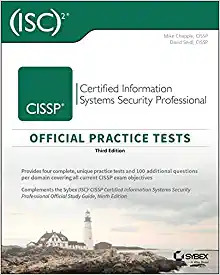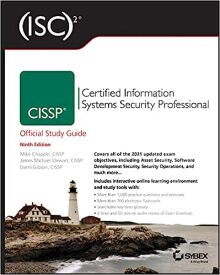
CISSP Domain 8 — Software Development Security
Domain 8 — Software Development Security
The Software Development Lifecycle or SDLC phases are:
- Project initiation and planning
- Functional requirements
- System design specifications
- Development
- Documentation
-
Testing and evaluation
- Acceptance: verify the system does what it's supposed to
- Certification: formal process of evaluating the security capabilities, a comprehensive technical analysis
- Accreditation: Management reviews the certification, authorizes the system to be implemented or deployed into production, can be provisional or full
- Implementation / deployment
Software Development Models
- Waterfall: Each phase is completed before the next one can begin, cannot revisit earlier phases.
- Structured Programming Development: Extensive use and reuse of subroutines and block structures.
- Spiral: A nested version of the original waterfall model, adds four sub-stages to each phase based on the Deming Plan: Plan, Do, Check, Act or PDCA. It's about continuous improvement.
- Cleanroom: Spend more time in design, get it right the first time more often.
- Iterative Development: Can go back and re-design as needed. This term isn't used these days, Agile, Scrum, Extreme Programming, etc,. are used instead.
- Prototyping: Build a simplified version of the application, release it for review, use feedback from stakeholders to build a second, much better version.
- Rapid Application Development or RAD: Strict time limits on each phase, relies on efficient tools to produce quality code quickly.
- Joint Analysis Development or JAD: Helps developers work directly with stakeholders.
- Computer-Aided Software Engineering or CASE: Today called IDE or Integrated Development Environment, like Visual Studio Team Edition.
- Component-Based Development: Use standardized building blocks to assemble, rather than write, the application code.
- Reuse Model: Built the application from existing and tested components.
- Extreme Programming: The team produces the software in a series of small, fully integrated releases intended to fulfill the owner-defined needs.
Component-Based Development and Reuse Model is where we are today.
Object-Oriented Design
- Encapsulation: a.k.a. data hiding
- Inheritance: Subclasses can share some or all characteristics of the main class.
- Polymorphism: Objects of different data types can be processed differently.
- Polyinstantiation: Different versions of the same information can exist at different classification levels. Users at a lower classification level don't know the higher level exists.
Distributed object-oriented systems can use CORBA, Enterprise JavaBean, and DCOM or Distributed Component Object Model. XML web services and cloud services are newer examples.
Code Weaknesses and Secure Coding Practices
- Buffer Overflow
- Covert Channel
- Malformed Input Attacks
- Memory Reuse
- Executable Content / Mobile Code
- Time of Check vs Time of Use or TOCTOU
- Between-the-Lines Attack
- Trapdoor / Backdoor

